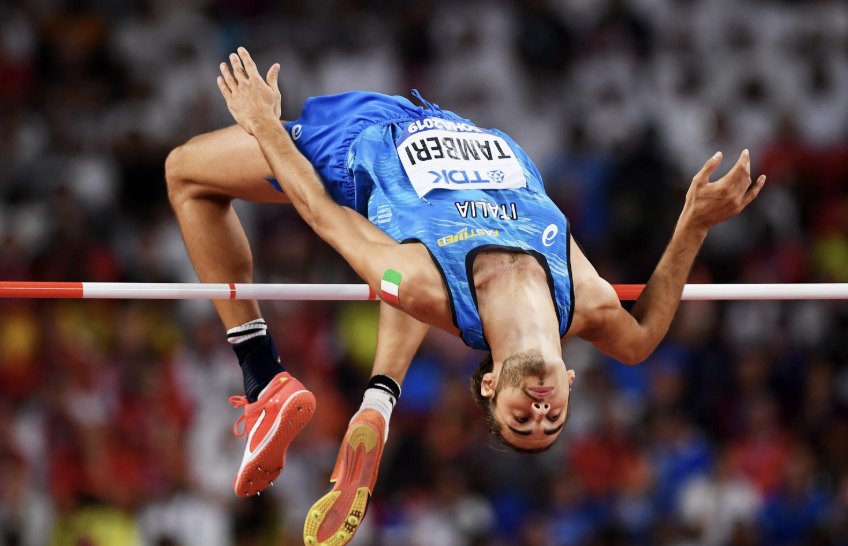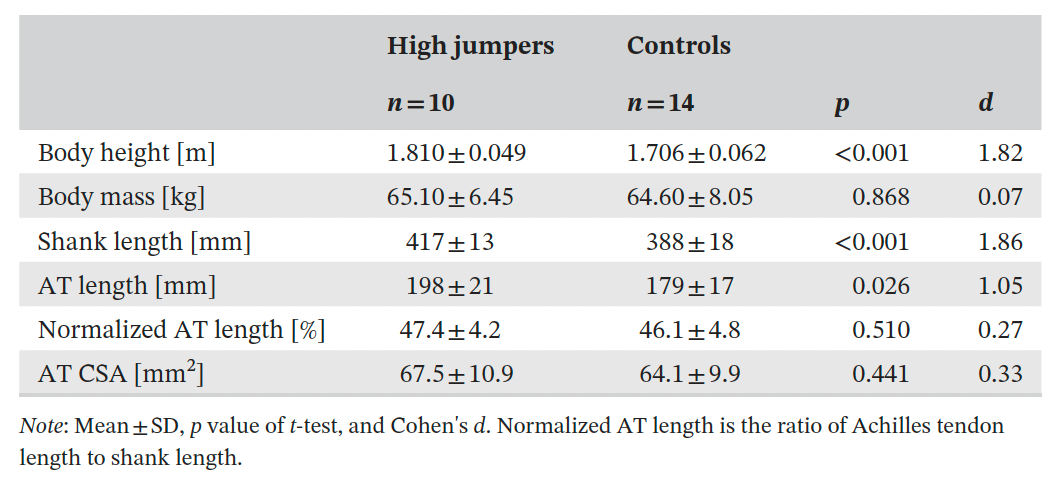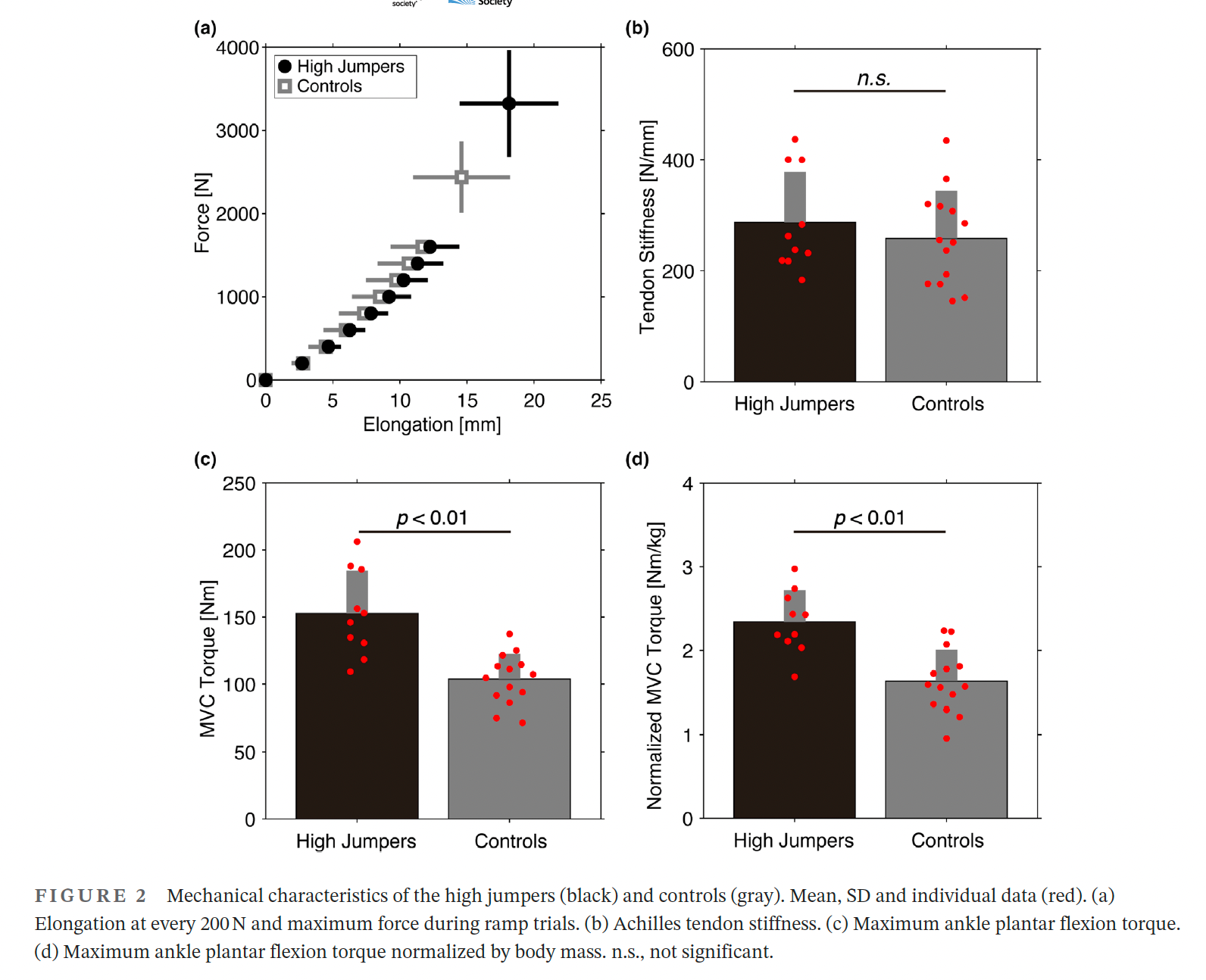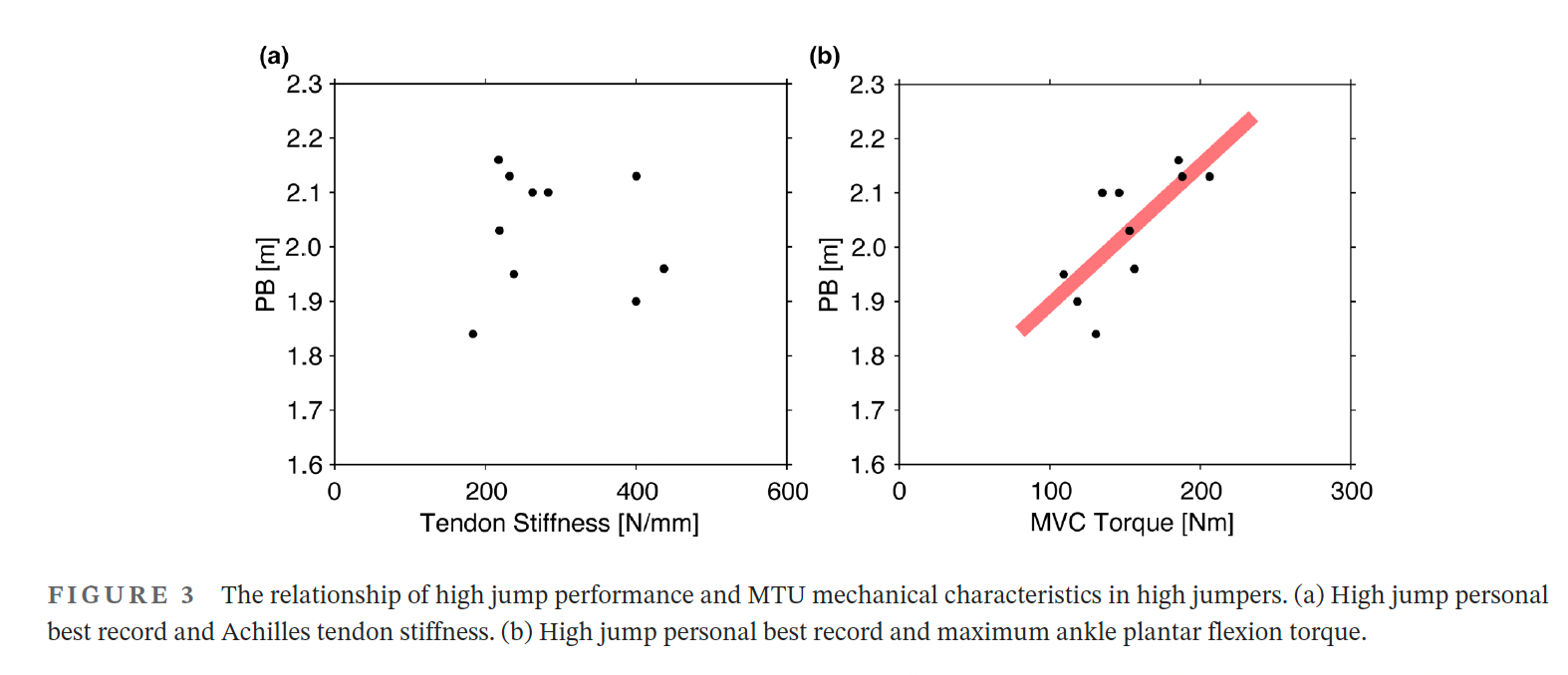The Achilles tendon (AT) plays a crucial role in storing and releasing energy during stretch-shortening cycle (SSC) activities like jumping and sprinting.
Past studies have linked tendon stiffness to performance, especially in sprinting, but it’s unclear whether tendon stiffening is necessary, or beneficial, for high jumpers.
This study investigates whether elite high jumpers exhibit adaptations in Achilles tendon stiffness in conjunction with muscle strength, and how these relate to jump performance.
Does Achilles tendon stiffness differ between high jumpers and untrained controls?

What Did the Researchers Do?
Researchers recruited 10 amateur male high jumpers (age ~20.1 with 7.7 years of experience) and 14 untrained males for comparison (age ~23.6 years).

Primary Measures
- Achilles tendon stiffness using ultrasound and motion capture.
- AT cross-sectional area (CSA) using B-mode ultrasound imaging.
- Ankle plantar flexion torque (MVC) using a dynamometer.
- Tendon elongation corrected for joint rotation.
Morphological Measures
- Body height and mass
- AT length (mm)
- Shank length (mm)
- Normalized AT length (AT length / shank length)
What Were the Results?
Tendon Stiffness and CSA
- Interestingly, AT stiffness was not significantly different between high jumpers and controls (287.3 ± 90.9 vs. 258.4 ± 85.6 N/mm).
- AT CSA was not statistically significant, and the effect size was small.

MVC Torque
- MVC was significantly higher in high jumpers (152.8 vs. 103.6 Nm; +47.5%).
- MVC correlated strongly with high jump PB (r = 0.73), while tendon stiffness did not (r = -0.07).

What Does This Mean?
- High jumpers improve muscle strength through training but don’t necessarily stiffen their tendons.
- Tendon stiffness may be inherently adequate in humans for explosive tasks like high jumping.
- Muscle force, rather than tendon adaptation, appears to be the primary driver of performance in vertical jumping.
Limitations
- MVC torque includes neural contributions, not just muscle properties.
- Ultrasound measurement of tendon CSA may miss regional variations in thickness.
Coach's Takeaway
- Building stronger muscles (especially ankle plantar flexors) is key for high jump performance, not necessarily stiffer tendons.
- Tendon morphology and mechanical properties may not change significantly in response to high jump training, even over the long term.
- Focus training on neuromuscular strength and explosive torque production, rather than chasing stiffness.
Learn More About Tendons
I hope this helps,
Ramsey
Reference
Fujimori, T., & Sado, N. (2025). Mechanical properties of the gastrocnemius muscle–tendon unit in male athletic high jumpers. Physiological Reports




